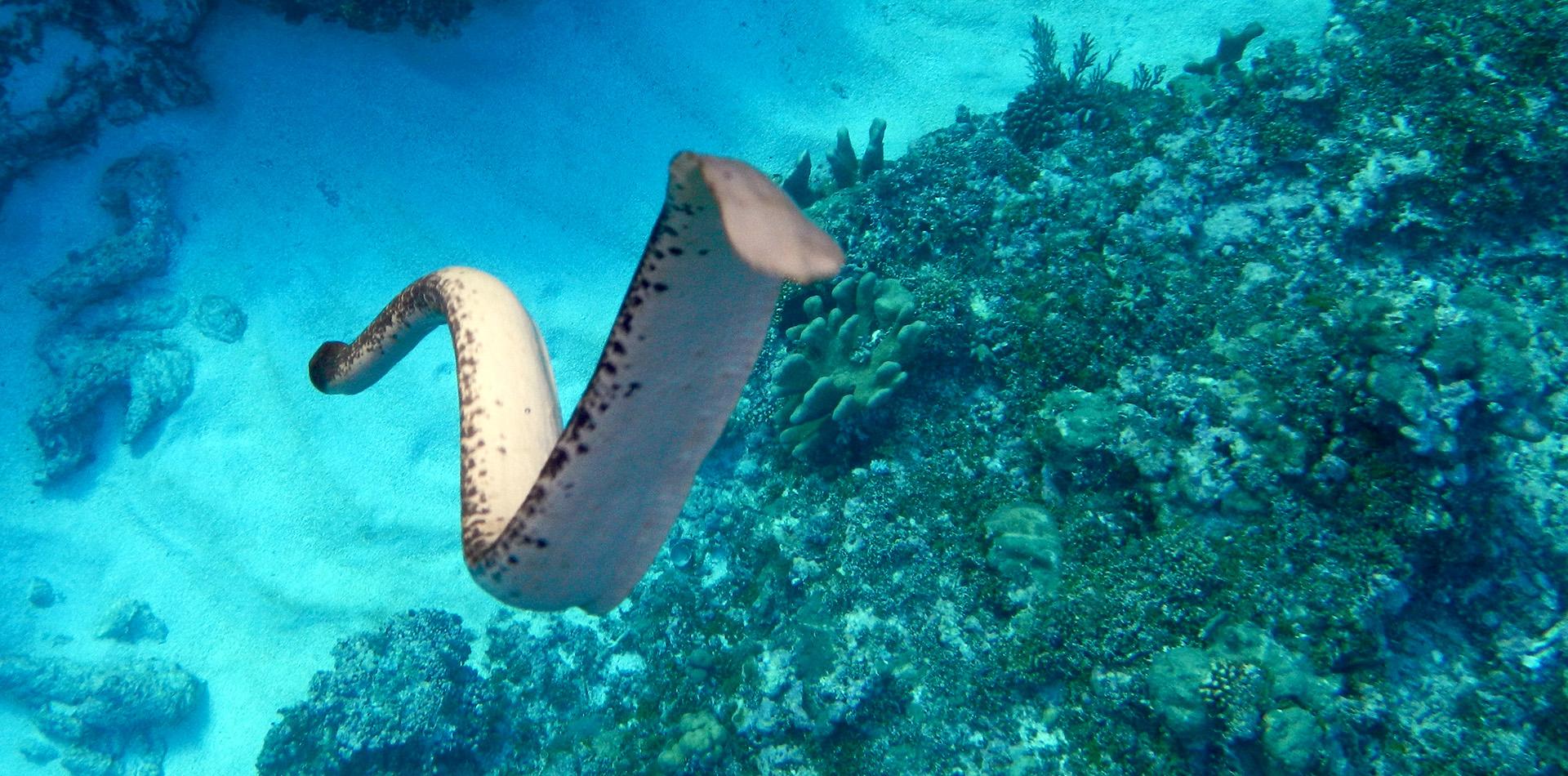From land to sea - the visual evolution of elapid snakes

An olive sea snake (Aipysurus laevis) diving underwater. Sea snakes live their entire lives at sea and must come up to the sea surface to breath air. Credit: Chris Malam.
Use sequence and expression analyses of sensory genes and spectrophotometry to explore the visual - or chemosensory - evolution of elapid snakes in their transition from land to sea.
Kate's group focuses on speciation, trait evolution and biodiversity discovery/conservation, especially in aquatic snakes. Current projects involve:
- Sequencing sea snake genomes to uncover population history and genomic patterns of speciation.
- Reconstructing morphological evolution in sea snakes, especially the remarkably frequent origin of ‘microcephalic’ burrowing-prey specialists and possible role in promoting reproductive isolation and rapid species diversification.
- Molecular evolution of sensory systems in the transition to aquatic habitats in snakes, including vision, skin photoreception and chemoreception.
- Sea snake conservation genetics and management in partnership with Western Australian trawl fisheries.
Our research has a substantial fieldwork component focused primarily in Indonesia and Western Australia.
Supervisors
Dr Kate Sanders | Dr Bruno Simoes (co-supervisor)
Research area: Evolution and conservation of reptiles
Recommended honours enrolment: Honours in Evolution and Palaeobiology
